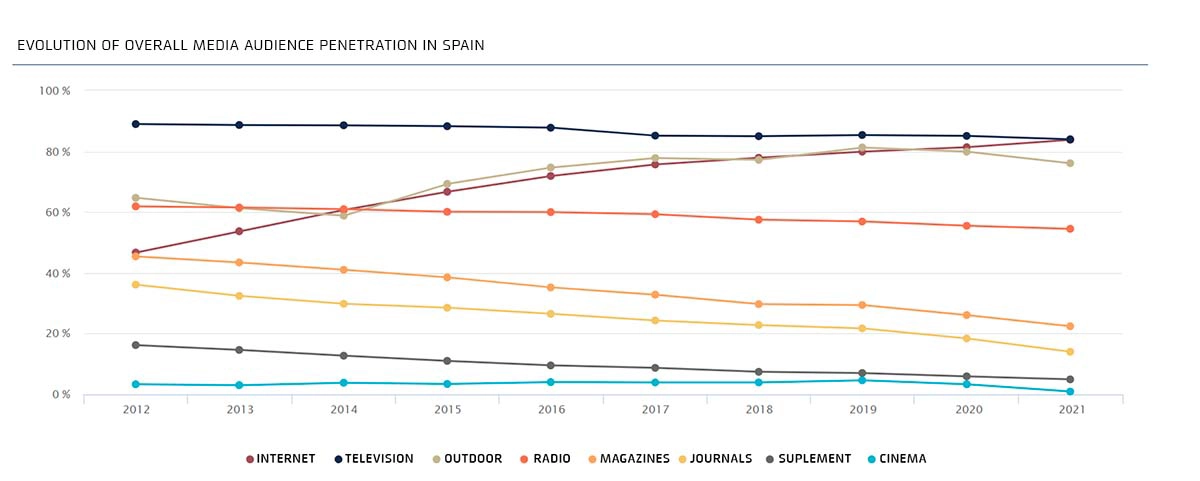Trends
Trends
OCT
22
2021
Spain
Radio gets on board with hybrid technology
Radio has always kept up with the technological advances that transform the world and the way we communicate. Since the dawn of the 21st century, digitalisation has brought evolving content and the emergence and fusion of new technologies and new formats, enabling this communication medium to adapt once again and refuting those who predicted that the arrival of Internet would spell its demise.
The Association for Media Research in Spain shows in its annual General Media Audience Survey (EGM) how the size of radio’s general audience has held quite strong since the 1980s. For their part, DTT- and Internet-based radio consumption have increased notably since 2010, particularly the latter.
Conventional radio was essentially news- and music-oriented, but since then the medium has incorporated new technologies to adapt to the latest audiovisual platforms and new listener habits, allowing a wider audience to access a greater variety of content. What’s more, radio has shown it can do more than just survive digitalisation: it also plays a very substantial role in the transformation of our world.
Just think of lockdown during the COVID-19 pandemic, when radio proved to be a key means of staying connected, informed, accompanied and entertained.
One step closer to the interactivity of a radio you can see
As one of the leading broadcasting infrastructure operators in Europe, Cellnex is keenly aware of its commitment and relevance in the technological evolution of radio and television.
So, in response to the changing face of hybrid DTT and Hybrid Broadcast Broadband TV (HbbTV), the company has just unveiled an innovative HbbTV application for radio stations which are available via DTT. The technology combines television broadcasts and broadband services in a single user experience.
Currently, content from radio stations that broadcast on DTT is static and consists of a fixed image or black background. However, the new application will allow users to tune into radio stations on their television set and enjoy added and variable content, from programme guides to stored or live videos, as well as live audio from broadcasts.
Likewise, the technology will make it possible to adapt and personalise the look and feel of the application and background image based on the preferences of each station. Some of the most prominent improvements are: display of current programme name and schedule, including start and end time; collection of data pertaining to number and duration of visits to DTT channel; and display of recommended or featured content.
Mataró Radio, the pioneers
Mataró Radio was the first station to test the new application in a joint project with Cellnex. The pilot scheme harnessed the HbbTV application for a radio programme broadcast by Mataró Audiovisual on Mataró’s local DTT multiplex (TL06B).
The scheme will serve to evaluate and validate the application across DTT so it can be received by connected devices with incorporated HbbTV technology, namely, television sets connected to the Internet and to a terrestrial antenna. These are increasingly common: indeed, in 2020 nearly 50% of homes were equipped with at least one Smart TV. The goal of this pilot scheme is to test, evaluate, scale and verify the technical feasibility of the architecture and application necessary to provide the HbbTV radio service.
Cellnex’s innovation team is also working to expand functionality and include other compatible devices.

















